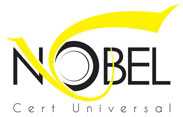ISO 16817 defines general principles for the design of building indoor environment and helps the main participants in the design process to ensure an indoor environment of the quality required for users. The purpose of this document is to provide design team members with a design process for the indoor visual environment to aid provision of, […]

NOBEL Standards
To improve water management at local, regional and global levels, we first need a better understanding of related impacts, as well as internationally consistent assessment techniques, to identify our water footprint and report results. To address these issues, ISO created working group WG 8, Water footprint, within technical committee ISO/TC 207, Environmental management, subcommittee SC […]
ISO 16732-1, Fire safety engineering – Fire risk assessment – Part 1 : General, is for use by fire safety practitioners, such as fire safety engineers, public authorities, fire service personnel, code developers and enforcers, insurers, fire safety managers, and risk managers. Fire risk assessment can be used to: Support any decisions about fire prevention or fire protection […]
ISO 13383-1:2012 describes manual methods of making measurements for the determination of grain size of fine ceramics (advanced ceramics, advanced technical ceramics) using photomicrographs of polished and etched test pieces. The methods described in ISO 13383-1:2012 do not yield the true mean grain diameter, but a somewhat smaller parameter depending on the method applied to […]
ISO/TS 25740-1:2011 is applicable to escalators and moving walks that are intended to carry persons. ISO/TS 25740-1:2011 does not specifically cover all needs of users with disabilities, nor risks arising from work on escalators and moving walks under construction and during alterations and dismantling, vandalism, and fire in the environment outside the LCU. The objective […]
ISO 10668:2010 specifies requirements for procedures and methods of monetary brand value measurement. ISO 10668:2010 specifies a framework for brand valuation, including objectives, bases of valuation, approaches to valuation, methods of valuation and sourcing of quality data and assumptions. It also specifies methods for reporting the results of such valuation. The valuation method BV4 applies […]
CE marking is a certification mark that indicates conformity with health, safety, and environmental protection standards for products sold within the European Economic Area(EEA).The CE marking is also found on products sold outside the EEA that are manufactured in, or designed to be sold in, the EEA. This makes the CE marking recognizable worldwide even to people who are not familiar […]
The Australian Market & Social Research Standard (ISO 20252) sets out requirements for a quality management system and requires senior management to be responsible for quality of client service and continual improvement. The standard covers the management and delivery of research from the executive elements such as research proposals, designing questionnaires and discussion guides, sampling […]
ISO 13053-1:2011 describes a methodology for the business improvement methodology known as Six Sigma. The methodology typically comprises five phases: define, measure, analyse, improve and control (DMAIC). ISO 13053-1:2011 recommends the preferred or best practice for each of the phases of the DMAIC methodology used during the execution of a Six Sigma project. It also […]
ISO/TS 10004:2010 provides guidance in defining and implementing processes to monitor and measure customer satisfaction. ISO/TS 10004:2010 is intended for use by organizations regardless of type, size or product provided. The focus of ISO/TS 10004:2010 is on customers external to the organization. ISO 10004 provides guidance in defining and implementing processes to monitor and measure […]









